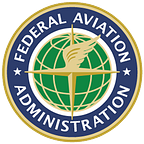Helicopter Wake Turbulence
By Gene Trainor, FAA Compliance and Airworthiness Division
A 2022 video showing a small plane caught in helicopter wake turbulence while coming in to land has garnered much attention at 1.3 million views.
According to a National Transportation Safety Board report, the pilot survived the crash at the California airport with only minor injuries, but the Cessna had “substantial” damage.
The video brings attention to the danger posed by helicopter wake turbulence.
“I think there’s a big misunderstanding with turbulence in general,” said Jessica Meiris, a Colorado helicopter pilot producing a safety video on helicopter wake turbulence with the FAA-industry Rotorcraft Collective. “In school, we’re taught about wake turbulence from jets and planes. I think helicopter-induced turbulence is widely misunderstood.”
Any aircraft generates wake turbulence in flight. Much of the aviation community’s attention has focused on larger planes because they produce the most turbulence. Wake turbulence occurs as a function of an aircraft producing lift, resulting in the formation of two counter-rotating vortices trailing behind the aircraft. Wake turbulence can force an aircraft to roll and cause the pilot to lose control.
Helicopters present a more unique situation. In a slow hover taxi or a stationary hover near the surface, helicopter main rotor blade(s) generate downwash, producing high-velocity outwash vortices to a distance about three times the rotor’s diameter, according to the FAA’s Aeronautical Information Manual (AIM). When rotor downwash hits the surface, the resulting outwash vortices have characteristics similar to wing tip vortices produced by fixed-wing aircraft. However, the AIM states that the vortex circulation is outward, upward, around, and away from the main rotor blade(s) in all directions.
In forward flight, departing or landing helicopters produce a pair of strong, high-speed trailing vortices similar to wing tip vortices of larger fixed-wing aircraft. According to the AIM, pilots of small aircraft should use caution when operating behind or crossing behind landing and departing helicopters.
To mitigate risks, the FAA urges pilots to wait several minutes for the turbulence to dissipate or maintain a safe distance from the rotor downwash. How long you should wait depends on wind conditions and the terrain. A rule of thumb in the aviation community is to wait at least two minutes or keep a distance of three nautical miles. FAA guidelines recommend that pilots of aircraft weighing 41,000 pounds or less, which covers most helicopters and small planes, avoid operating within three main rotor diameters of any helicopter operating in a slow hover taxi or a stationary hover.
“A helicopter in a hover is a moving microburst,” Meiris noted.
With regard to a forward flight for aircraft in general, the FAA provides a set of recommendations based on the multitude of aircraft and weight classes that travel U.S. skies, with an emphasis on larger aircraft. The recommendations are available in Chapter 7, Section 4 of the AIM. For helicopters flying behind another helicopter, you should generally stay above the aircraft in front of you to avoid the wake turbulence.
The key takeaway is that helicopter wake turbulence exists, and it can be dangerous. Please take the proper precautions.
I would like to end this column with some important news. On March 8, 2023, the FAA published a Special Airworthiness Information Bulletin (SAIB) for crash-resistant fuel systems. Through the SAIB, owners of rotorcraft built after April 5, 2020 (i.e., those not covered by the law requiring crash-resistant fuel systems) are encouraged to install equipment that helps protect helicopter occupants from post-crash fires.
Gene Trainor works as the communications specialist/executive technical editor for the FAA’s Compliance and Airworthiness Division.
